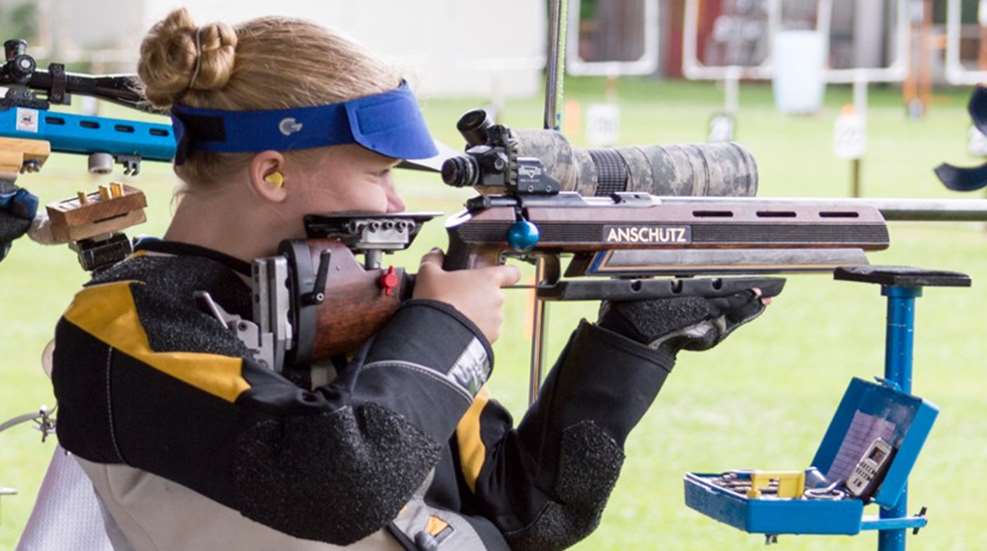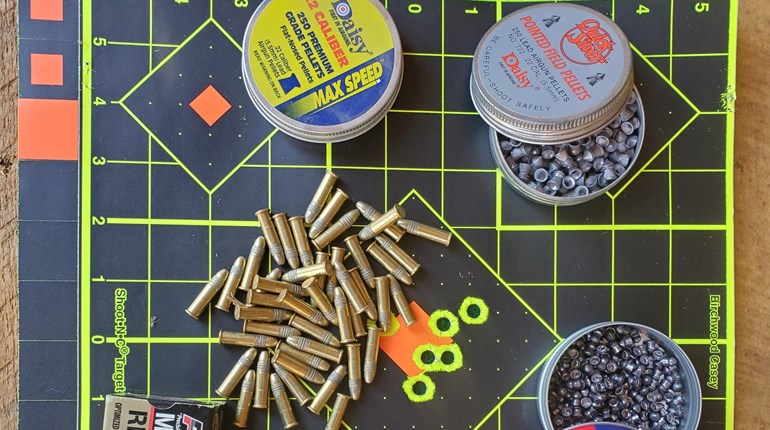
Thousands of words have been written about how to breathe when shooting, but you can boil it all down to using the Keep It Short & Simple (KISS) method. The KISS method of breath control is to stop breathing while you aim and fire the shot. Of course, the million-dollar question is what is the best way for you to control your breathing (by which we mean interrupting the natural breathing cycle) while aiming and firing the shot. Should the lungs be full? Two-thirds full? As close to empty as possible?
Before we answer these questions, we should remember a few basic facts:
1. Breathing is automatic. We breathe without conscious effort. Our bodies will inhale and exhale no matter how hard we try to temporarily halt the process.
2. The body has a natural breathing cycle:a. The chest and diaphragm expand, pulling air into the lungs; b. The chest and diaphragm relax, pushing air out of the lungs.
3. Breathing while firing the shot hurts accuracy because it increases the movement of the aligned sights on the target (wobble area).
The best time to control the breathing cycle is during what’s called the “respiratory pause.” This is when you’re done exhaling, but it isn’t something you should have to think about. Don’t force air out, because forcing air out makes you contract your chest muscles…which is the last thing you want. During the respiratory pause, your chest muscles are relaxed, and you can stop breathing longer without feeling uncomfortable. If you try to stop breathing while your lungs are filled with air, you’ll begin to experience muscle discomfort sooner than if your lungs are mostly empty and the muscles involved with breathing are relaxed.
How long can you extend the respiratory pause? That depends on your physical condition and state of mind. Under normal circumstances, a shooter can extend a respiratory pause for eight seconds, 10 at the most. Problems begin to occur in several areas when breathing is stopped for longer than that period. Visual acuity is the first victim of the lack of oxygen. Instead of a true image of sight alignment and sight picture, we see a burned-in image of what existed at the time vision began to fail. Another concern with overextending the respiratory pause is your body starts crying for air, which makes you stop paying attention to your sight alignment/sight picture and start paying attention to your need to breathe.
Depending on your shooting discipline, you can modify your use of the respiratory pause. Some air can be retained in your lungs to help establish your natural point of aim. For example, the amount of air retained in the lungs affects the vertical natural point of aim. When developing a shooting position, remember that bone support is the goal. Bones do not fatigue or stretch like muscles do.
An exception to the use of the respiratory pause technique for breath control occurs when physical stress is present (as in running, or some international pistol disciplines). For example, a hunter has just run up a small hill and dropped into position to shoot the largest buck she has ever seen. She stops her breathing during a respiratory pause, and the crosshairs are jumping all over the place. This movement is due to her heart pounding and lungs demanding air. She does not have time to relax and let her heart and breathing slow down. What does she do? She takes a full breath and holds it. This will steady the position and allow for a quick shot. Remember, this technique only works for a very short period of time.
Another example in which the respiratory pause is not used to control breathing is in international pistol disciplines. The technique used by these shooters is to inhale as the pistol is raised from the “ready position”—with the muzzle pointed downward at a 45-degree angle—to the target, then hold air in the lungs while the shot or string is fired. Twenty seconds is the time limit for timed fire, which is a long time to hold one’s breath. One option is to shoot the string faster, before breathing becomes a problem.
Remember when we mentioned the KISS method earlier? Here are some short, simple exercises that will help you learn what we mean:
Exercise 1.
Ask an instructor, coach or observer to watch you while you hold your breath. If you’re like most beginning shooters, you’ll take a deep breath and hold it. Holding the lungs full requires the chest muscles to work overtime. Fatigue will set in. While you’re doing this, your body is under stress.
Exercise 2.
Exhale all the air from your lungs. If you’re like most beginning shooters, you will push all the air out of your lungs, requiring you to breathe more quickly than normal.
Exercise 3.
Ask your instructor or coach to give you a signal to just stop breathing. You’ll naturally stop breathing right at the respiratory pause!
To integrate breath control into the act of firing and completing the shot, you must stop breathing to check the natural point of aim. During this time, you are using up your air supply. To ensure you have an adequate air supply, you can take a short breath or two to oxygenate the lungs. This restarts your internal time clock for firing the shot. Many techniques modify the breathing cycle to support the firing of the shot.
Experiment and have fun discovering what works best for your shooting discipline.






































